




An Overview of Muscle Work
Running fast when a dog is behind? Or taking a body part away from any sensation of hot and cold. Ever wondered how are we able to do such things? The answer is with the help of our muscles. Even when we are smiling or just sitting in a position, our muscles are always working. They help in the beating of the heart, they let us use our mouth to communicate, and much more are the work of our muscles. Today in this article, we will learn all about our muscles and how muscles work and much more. So let's start learning.
What is Muscle?
Muscles are soft tissue which is present in both animals and humans. Actin and myosin are protein filaments which are found in the cells of the muscle. These filaments slide over one another which causes changes in the length and shape of the muscle cell, causing contraction in the muscle.
Types of Muscle
There are three types of muscle found in our body namely skeletal, smooth, or involuntary and cardiac muscles.
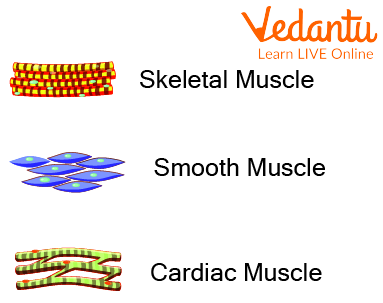
Types of Muscle
Skeletal Muscles
These muscles have dark and light staining to them due to which they appear striated. They are attached to our bones like strings.
They help to keep our skeleton in place and also help in movement.
These muscles are voluntary which means are under our control due to which we can use them by choice for movements and locomotion.
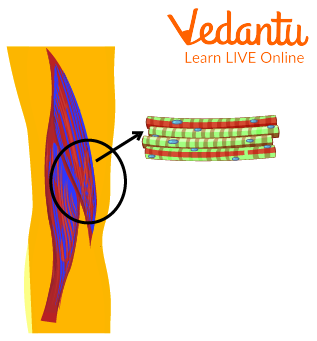
Skeletal Muscles
Smooth or Involuntary Muscles
These muscles have a smooth appearance and do not have any striation.
They are not under our direct control but rather are controlled by our nervous system, due to which they are called involuntary muscles.
These muscles line our digestive tract and blood vessels. They are working continuously throughout the day for our well-being and are not easily tired.
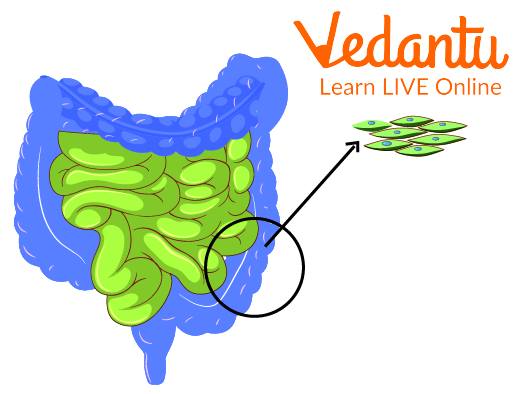
Smooth Muscles
Cardiac Muscles
The musculature found in the heart is called cardiac muscle.
The walls of heart chambers which are atria and ventricles are all made up of muscles. They are rhythmic and powerful and pump blood to the entire body.
They are involuntary in nature.
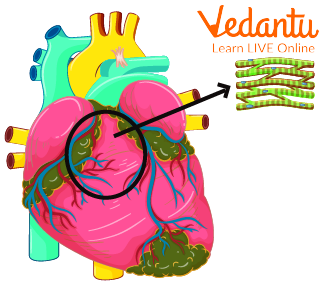
Cardiac Muscles
How do Muscles Work?
Muscle movements are controlled and coordinated which helps in the movement of various parts of the body. Usually, muscles work in pairs but before learning that let's learn how muscles are made. Muscles are composed of two kinds of fibres namely actin and myosin. Actin is usually thin and myosin is thick and is called thin and thick filaments, respectively. These filaments usually work together at the expense of energy.
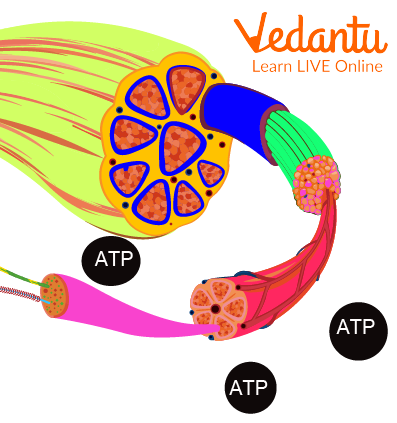
Muscle Fibres and usage of ATP
The movement of muscles is controlled by the nervous system. Signals from the motor neurons are sent to target muscles and cause movement of the desired body part voluntarily. Whereas the involuntary contraction of smooth muscles is controlled by the nervous system and its secretions. When you run, the messages to and from the brain are more rigorous as many muscles have to work together. Muscles move the desired body parts by contracting and relaxing.
Muscles are Team Players
As mentioned earlier, Muscles work in pairs. Muscles can only pull bones but can't push them back to the mean position. This concludes that when muscles work they work in pairs of flexors and extensors. The flexor contracts to bend an appendage or limb at a joint. Then, when the movement is completed, the flexor relaxes and the extensor contracts to extend or straighten the limb at the same joint and the mean position is attained. For example, when we bend our elbow, the biceps muscles contract. Then the biceps relax and the triceps contract to straighten the elbow.
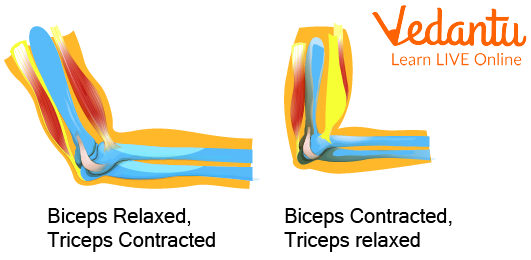
Working of Biceps and Triceps
The structural and functional unit of muscles is called sarcomere in which actin and myosin fibres are arranged alternately. The muscles are packed into bundles called fascicles. The endoplasmic reticulum of the sarcomere is called the sarcoplasmic reticulum which is rich in Calcium ions which play a role in the polarisation of the muscle fibres by binding with actin filaments.
Muscles of Leg (Leg Muscles - Thigh)
There are mainly two muscle groups present in your upper leg, also called thigh muscles, including back thigh muscles and front thigh muscles called quadricep muscles.
They are as follows:
Quadriceps Muscles - This muscle group is present in the front thigh which is the strongest and largest muscle in the human body. They work to straighten or extend your leg.
Hamstring Muscles and Hamstring Muscle Action - This muscle group is present in the back of your thigh (back thigh muscles). They are mainly used to bend the knees. The hamstring muscle action is used to perform various functions like climbing stairs, running, walking, etc.
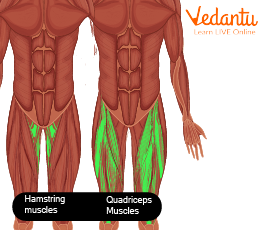
Quadriceps and Hamstring Muscles
Muscle Power
Muscular power refers to the greatest force that is produced over a short period, such as while explosive jumping or throwing punches.
Muscle Endurance
When a little force is maintained for a long time during sports like skipping or swinging. It also plays a big role in almost every athletic endeavour. Long-distance running like the marathon is a sport that requires muscular endurance.
Summary
Muscles are specialised to generate potential and cause the movement of joints in the human body. Without muscles, we wouldn't have been able to even sit on our backs or read or write. Sometimes the muscles can be damaged due to any genetic or autoimmune disorder or can also be damaged due to serious injuries in those cases people are bound to beds or wheelchairs and have to depend on others for their daily needs. Now as we have learnt about the functioning of muscles and how they help in our body movements, we can appreciate the fact that without muscles, there would have been zero lively movements in our lives. Muscles are used for blinking our eyes, lifting things off the tables, writing and also to pump blood into all the parts of our body.
FAQs on Muscles
1. Name some muscular disorders.
There are various muscular disorders. Some of them are listed below:
Muscular dystrophy is a genetically inherited disorder that is transferred from parents to their offspring. Symptoms of this can appear at any time throughout life, and sometimes can be seen in infants, on the other hand, can also be undetectable till old age. In this disorder, a person's muscles are degraded gradually and lose their ability to contract. There is no long-lasting remedy for this problem.
Myasthenia gravis - It is an autoimmune disorder that destroys the neuromuscular junction.
2. Why do we get muscular pain after extensive exercise?
After a vigorous session of exercising, all the available oxygen to the cells of muscle fibres is used up due to which muscles have to rely on oxygen storage. Due to this dependency on the reservoir oxygen source, the muscles are fatigued. Moreover, while exercising, muscular respiration increases, and lack of oxygen leads to an anaerobic mode of respiration which leads to the formation of lactic acid in muscles. All this is the cause of muscle soreness, pain, and fatigue after exercising.
3. How do muscles grow?
After you work out, your body repairs or replaces damaged muscle fibres through a cellular process where it fuses muscle fibres together to form new muscle protein strands or myofibrils. These repaired myofibrils increase in thickness and number to create muscle hypertrophy (growth).
4. How many muscles are present in the human body?
Different muscles present in our body have different functions therefore there is a requirement for differentiated muscles for various activities and functions. There are about 650 skeletal muscles in the human body. And for example, we can see that there is a need for about seventeen muscles to make us smile.









